The trade war and pandemic have made importers think long and hard about where they should produce their products.
Many consumer product brands that previously relied exclusively on China have come to adopt a China +1 approach. To mitigate supply chain risks, they maintain the bulk of their production in China but allocate a percentage of production to suppliers in other countries.
Thailand is one country that importers have taken an interest in recently. Known for its beautiful beaches and tropical weather, it also has a thriving manufacturing sector. If you’re thinking about manufacturing in Thailand, there are various factors you should consider — for example, the main products it exports, the quality of its infrastructure, and its labor force.
Here we talk about those considerations to help you make an informed decision.
What are Thailand’s Top Export Products?
The economy of Thailand has seen significant growth over the last few decades, and the country currently has the 8th largest economy in Asia.
In 2019, Thailand exported $245.3 billion worth of goods to countries around the world. Among ASEAN countries, it’s the top exporter of computers. It’s also the second-biggest exporter of hard disk drives (HDD) in the world, after China.
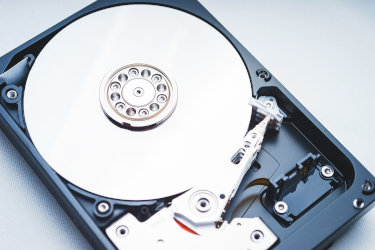
Hard Disk Drive (HDD)
Here is a list of Thailand’s top 10 export products:
- Computers, optical readers ($11.8 Billion)
- Cars ($10.3 Billion)
- Automobile parts/accessories ($8 Billion)
- Gold (unwrought) ($7.6 Billion)
- Electronic integrated circuits, parts ($7.6 Billion)
- Trucks ($7.5 Billion)
- Processed petroleum oils ($6.5 Billion)
- Rubber tires (new) ($5.6 Billion)
- Air conditioners ($5.5 Billion)
- Rice ($4.2 Billion)
(Source)
Aside from computers, Thailand is also a major manufacturer of cars in Asia. The auto industry is responsible for 12% of the country’s economic growth. Many of the world’s largest automakers — including Toyota, Honda, BMW, and others — have a presence there.
The country also has significant strategic advantages as a rubber exporter — it is the largest exporter of natural rubber in the world. This lends itself to the production of rubber tires for Thailand’s thriving automotive sector. It also means that if you’re producing products that contain rubber, your factory should be able to easily source raw materials within the country.
Once your products are ready to leave the manufacturing facility, they need to be transported to their destination. This means utilizing Thailand’s transportation infrastructure.
How Does Thailand’s Infrastructure Compare?
Thailand’s infrastructure is ranked roughly near the middle of all countries. According to the 2019 Global Competitiveness Report, its infrastructure ranks 71st in the world. This is close to Vietnam (77th) and Indonesia (72nd). Thailand’s infrastructure is not quite as developed as China’s, which is ranked 36th.
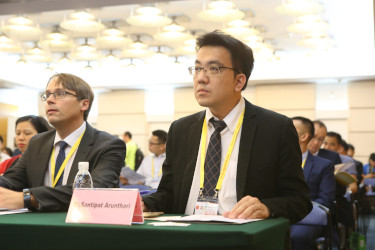
Dr. Santipat Arunthari, Executive director of the Eastern Economic Corridor (EEC) in Thailand (Source: Unido – Flickr)
That being said, the Thai government is investing heavily. Over the last several years, Thailand has committed to some major new infrastructure projects. These include 2,000 km of double-track trains, high-speed rail lines to link three major airports, and an increase in airport capacity.
As part of its Eastern Economic Corridor (EEC) plan, the country has been improving its connectivity with neighboring countries by expanding and improving many of its existing airports, railways, and seaports.
All of this new and updated infrastructure means that many manufactured products can be transported efficiently to Thailand’s export markets. But before the products can be transported, someone has to make them.
What Should You Know About Thailand’s Labor Force?
Thailand’s minimum wage is somewhat similar to that of China’s less-expensive cities and provinces — between 313-336 baht per day across the country ($10.02-10.76). Assuming 20 working days, that comes out to $200-$215 per month. For comparison, China’s minimum wages range from 1,150 CNY ($163 USD) to 2,480 CNY ($361 USD) per month.
Compared to other countries in Southeast Asia, this is on the higher side. Because of this, Thailand is not necessarily an ideal location for labor-intensive goods like apparel and footwear.
Thailand has ambitions to move further away from these kinds of low-cost products. It’s Thailand 4.0 initiative is aimed at innovation as well as the automation of manufacturing processes. There is some crossover between Thailand’s aims and China’s Made in China 2025 plan.
If you are planning to work with a new factory in Thailand and want to learn more about how to assess their capabilities, we recommend downloading the following guide.
Free Guide
How to Prepare for a Factory Audit
A factory audit helps you assess a supplier's systems, capacity, workplace environment, or capabilities to ensure they meet your requirements as a buyer.
But which type of audit should you conduct, and which points should you cover on your checklist? In this free guide, you'll learn how to run an effective supplier assessment.

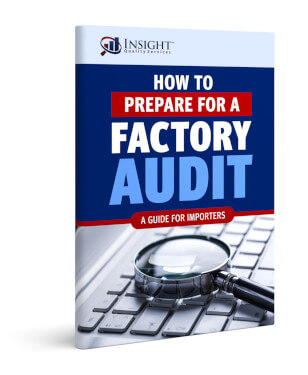

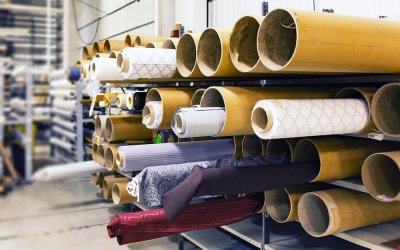
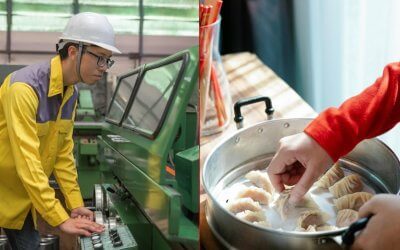
Wow Thailand, aside from agriculture and rice. Thailand is the world’s largest exporter of natural rubber.